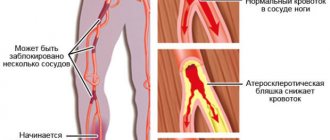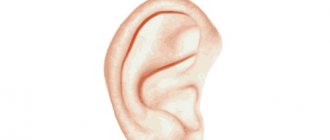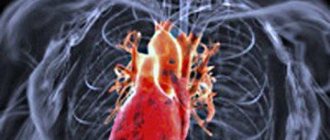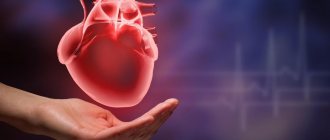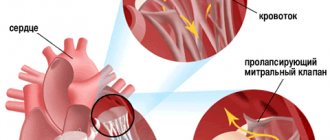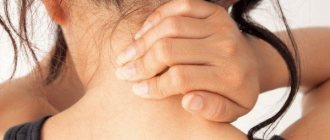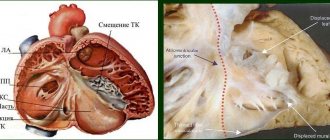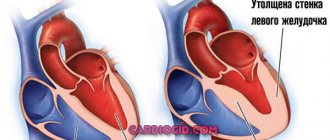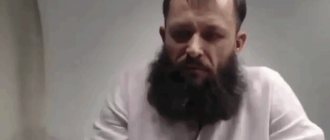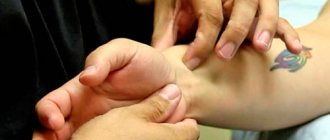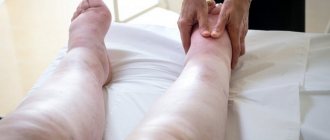Five Main First Aid Points for Heart Problems
In China they often say: “The heart is the Emperor of our body ,” and “Hundreds of diseases originate in the heart .
And indeed it is. The heart is the most important organ in the entire body. According to the theory of Chinese medicine, our “flame motor” is responsible for blood vessels, that is, for transporting blood, thereby providing the body with nutrients.
In China, longevity is associated with the heart; it is believed that if there is peace in the heart, then a person will live a long and happy life, and if there is chaos in the soul and thoughts, then both internal organs, which directly depend on the state of the heart, and health in general will suffer. .
It is therefore not surprising that the importance of our heart health should be a priority, especially after forty and into old age.
How to understand that problems have begun in the heart, and most importantly, what methods to use to restore the organ?
Perhaps the most effective way - fast and safe - is the method of influencing acupuncture points. This is a method that you can use now and get a positive effect. After all, for the heart to function normally, you only need to raise qi and blood to the proper level, normalize their circulation, thereby ensuring the functioning of the organ.
And this is achieved by clearing the paths of energy and blood movement - channels and vessels . (It should be added that Chinese medicine also includes blood vessels and nerve pathways in the concept of channels.)
The most interesting thing is that many people, having tried to influence the points, often repeat: “It’s so simple!”, “Why haven’t I done this before...”
This ancient art originated several thousand years ago, and to this day not only has not lost its relevance, but is becoming more and more in demand every year around the world. Today, influencing the points is practiced by millions of people all over the world, and not just in China.
So, the five most important points for heart problems.
CONGESTION POINT
It is located on the Pericardial canal. The channel runs along the center line of the inside of the arm from the chest area to the tip of the middle finger.
The point is located between the Tian Quan and Qu Ze . (Tian Quan is located on the inner surface of the shoulder, below the level of the axillary fold by 2 cun, that is, three
fingers clasped together. Qu Ze is located in the middle of the inner surface of the elbow, at the ulnar edge of the biceps brachii tendon.) If the distance between the points is conditionally divided into 3 segments, then the “ Congestion Point ” is located in the first third of Qu Ze.
If in the evening you often have a feeling of tightness in your chest, pain in your heart, which may indicate an impending heart attack, the “Congestion Point” will be extremely painful. You should definitely push and relax it. Massage several times every day.
Typically, the Pericardial canal should be affected on the left hand, since it is closer to the heart (the rule here is to massage the canal or the point of the canal on the side where the organ is located), and this means the effect will be faster and more noticeable. The location of the “Congestion Point” is not the same for different people. Some are a centimeter higher, others are lower.
Look for the most painful place. After a couple of days of massage, a large bruise may appear at the site of the “Congestion Point,” or other painful point or area you find. This indicates that the stagnation of blood in this area has resolved.
You need to constantly probe for congestion areas. To determine the presence of heart problems as early as possible, immediately massage the channel and get rid of stagnation of qi and blood.
NEI GUANG POINT
This is also a point of the Pericardial channel. Perhaps the Nei Guan point can
high or low blood pressure (the point regulates blood pressure in both directions),
motion sickness in transport.
Massaging the point helps break through blockages in the movement of energy. For all congestion in the body as a whole, for all ailments, it is useful to influence Nei Guan.
JI QUAN POINT
The point is located on the Heart channel. The name of the point means “highest source”, that is, from here the supply of blood from the heart to all other channels and organs begins, it is an inexhaustible spring. The point is located in the center of the armpit.
If you press down on the center of the armpit with your thumb, you can feel the tendons under the skin. As soon as you rub them, the impulse reaches your fingertips. Try to always maintain this momentum, because this is an indicator of the permeability of the channel.
In your free time, rub the location of the point often with your thumbs and move the tendons. If you are afraid of tickling in this place, then the Heart channel is not blocked.
It can be said that Ji Quan has
regulate the condition of blood vessels;
in case of rapid heartbeat, the point helps to slow down the rhythm; in case of slow heart rate, it stimulates.
And yet, the point has one very important function - its massage helps to avoid the formation of blood clots in the vascular system.
LIN DAO POINT
Heart channel point. The point is located 1.5 cun (two fingers closed together) above the wrist fold at the level of the little finger (from the little finger side). Press this place, you will feel the tendon under the skin, a point next to the tendon, slightly outward from it. The point should be kneaded closer to the tendon.
Helps alleviate anxieties, fears, and sadness. Helps with cardiac asthma.
It has the ability to process mucus and cleanse the “holes of the heart.”
In people suffering from heart diseases, especially those affecting the heart valve, such as atrial fibrillation, extrasystole, tachycardia, shortness of breath and accumulation of sputum are usually also observed.
Massage of the Ling Dao point helps get rid of phlegm and mucus, facilitates breathing, and improves the condition of the heart.
Ling Dao also helps soften an attack of heart disease and is effective against arrhythmia and angina pectoris.
(Don’t wait for an attack - you simply won’t have the strength to massage the point.)
For people with heart disease, the Ling Dao point is very painful; it needs to be kneaded more often.
POINT SHEN MEN
The Shen Men point is the most important point of the Heart Channel. Located on the wrist fold, at the inner end, in the depression under the bone. You can only press it with your fingernail.
There is an expression in Chinese medicine: “To treat an organ, act on its passage point.” Shen Men is the passage point of the Heart channel, its stimulation directly heals the organ itself.
There is also this expression: “If an organ is sick, look for the source point of the channel.” Shen Men is the source point. It can be said that Shen Men is the main point for the treatment of all heart diseases.
Attention: the points of the Heart channel should not be affected for too long, 3 minutes will be enough, 2-3 times a day.
HOW TO INFLUENCE POINTS
Active points differ in structure from other body tissues. When pain occurs or illness develops, the point can react to it: it will be more painful than the tissues nearby, colder or hotter than the rest of the body. When you press on it with your finger and move the tissue, grains of sand or hardening will be felt under your finger.
Syndrome and the army ↑
This disease can be found in 5-25% of older people. Most often, symptoms of the disease appear in males.
The main signs of the disease are frequent loss of consciousness, which in some cases is accompanied by convulsions. Seizures occur when the head is turned or tilted, or when the neck is pinched by a narrow collar or tight tie.
In some cases, when performing a massage of the carotid sinus, it is possible to identify sinus pauses and short-term disturbances of consciousness.
The most common type of disease is the cardiac type. With this pathology, massage of the carotid sinus can lead to a temporary cessation of the activity of the ventricles of the heart for more than 3 seconds.
A rarer type of syndrome is vascular, a sign of which is a decrease in pressure and a deterioration in the patient’s condition. At the same time, the heart rate remains unchanged.
With a mixed type of syndrome, pressure on the point leads to bradycardia and a decrease in blood pressure.
If the disease is not treated or inadequate therapy is used, the following complications may develop:
- Disruption of blood supply to a larger or smaller area of the brain. Initially, this causes only transient neurological disorders: for example, speech becomes slurred periodically and for a short time, or an arm or leg is “lost.” Such symptoms, lasting up to a day, are called transient ischemic attack. If such symptoms are not paid attention to, the following complication develops.
- Stroke. In this case, it is usually ischemic in nature. It occurs due to the fact that one of the vertebral arteries is blocked from the outside or inside so much that this blood becomes insufficient for the normal functioning of the part of the brain that it should provide nutrition.
- Physiological compensation of impaired blood supply to the brain by increasing perfusion pressure. For this, the main stage of compensation will be increased blood pressure. This leads to the development of adverse effects not only on the brain, but also on the heart muscle and the organ of vision.
A person who quite often experiences dizziness, falls while maintaining consciousness, impaired coordination and balance, loses the ability to work and even the ability to self-care.
Vertebral artery syndrome does not always cause a stroke, but disability due to insufficient blood supply to the brain occurs quite often.
Whether someone with this disease is accepted into the army depends on how much the patency of the artery is impaired and how much the brain suffers as a result:
- if the pathology causes only headaches, and the patency of the artery can be restored with medication, then the young man can be drafted into the army;
- in case of dizziness, convulsive attacks, if there have already been transient ischemic attacks, “Unfit” is entered in the column about military duty.
Thus, vertebral artery syndrome is a polyetiological pathology that has a certain combination of symptoms.
Her treatment must be comprehensive.
Some types of therapy are general for any cause of the disease, while others must deal directly with its etiology.
It’s the same in the body.
It is this VSD that limits your visit to a massage therapist.
You need to know this.
You can easily increase your blood pressure with a massage. And you can, despite this, go to another world. And that’s the last thing you need.
It is good if the massage room has a tonometer - a device for measuring Blood Pressure. In this case, mandatory control - Before and After.
And none - maybe it will work out if the pressure is higher than your norm.
You can measure your blood pressure yourself at home. And if it is higher than normal, call your massage therapist and say that you are sick today and will not come to him. This will be considered good manners. And this massage therapist should be grateful to you - you are saving him from unjustified risk.
No. Not forever.
I would say this - this syndrome manifests itself in the presence of pathogenic external factors.
For example, you sit straight at the monitor from morning to evening.
Or, in the summer at the dacha - he loves to work in his garden from dawn to evening. As a rule, butt up and face down. Blood flow to the head, disruption of its outflow and circulation can easily provoke this syndrome.
You are over 50. You are almost a pensioner and live in the city. Your job is to go to the store, to the market, to the sofa and to the TV.
Minimum movements. The blood stagnates. Our Syndrome is just waiting for you to be taken by surprise.
Magnetic storms. You are weather dependent. The vascular background changes, the pressure increases - and here it is a spasm.
What advice can I give you? Moreover, so that they work specifically for you?
Watch yourself. Who else but you knows yourself better than others?
If you are susceptible to this syndrome, you ALREADY KNOW what to do to make it hurt less.
Sometimes just a cold rag on the head and ordinary sleep works better than all massage therapists and pills.
Listen to yourself! Know yourself! Believe in yourself! - That's all my advice.
ARRHYTHMIA: points that will restore heart rhythm
Using 2-3 fingers of both hands, gently press on the eyeballs for 0.5-1 minute. If necessary, repeat the effect.
What to do if arrhythmia occurs? First of all, consult a doctor for emergency assistance and determine the cause of the heart rhythm disorder. It is important to follow all medical prescriptions for taking medications, eat right, and, if possible, avoid traumatic situations.
As first aid for arrhythmia at home, you can use methods such as acupressure and segmental massage, “straining,” pressing on the eyeballs and massage of the sinocarotid zone. You can try to “persuad” the arrhythmia, that is, use self-hypnosis techniques.
"Straining" technique
Take a deep breath through your mouth.
Hold your breath, strain.
Stay in this state for as long as breathing allows (at least 5-10 seconds).
Then exhale the air through your mouth (preferably in portions, releasing the air in a jerky manner through the lips folded into a tube).
Repeat this first aid technique several times.
This effect during arrhythmia enhances the activity of the parasympathetic nervous system and slows the heart rate, eliminating interruptions in the functioning of the heart.
Gently pressing on the eyeballs
Using 2-3 fingers of both hands, gently press on the eyeballs for 0.5-1 minute. If necessary, repeat the effect.
Often, in this way it is possible to interrupt an attack of paroxysmal tachycardia, reduce the heart rate, and normalize the heart rhythm during extrasystole, especially if interruptions in the heart’s function arose due to stress, overwork and other conditions not related to organic pathology of the cardiovascular system.
Massage of the sinocarotid area
Below the angle of the lower jaw in the neck is the common carotid artery, which at this point divides into external and internal branches.
This is where the so-called sinocarotid zone is located - a kind of sensor on the human body that allows you to regulate blood pressure and heart rate. Massage of this area is carried out using the thumb (gentle pressure and vibration for 3-5 minutes) alternately on each side of the neck.
This first aid for arrhythmia is often quite effective.
Counting your pulse out loud
If interruptions in the functioning of the heart are associated with neuropsychic overstrain, chronic stress, you can normalize the rhythm by simply counting out loud.
To do this, you need to sit on a chair, close your eyes, take your left wrist with your right hand and feel for the pulse.
After this, we begin to count heartbeats loudly for 3-5 minutes.
At the same time, we call the numbers in order, not paying attention to the loss of the pulse. Gradually, as the count progresses, the arrhythmia will decrease and after a few minutes the heart rhythm can completely normalize.
We persuade arrhythmia
We use self-hypnosis techniques. You need to take a comfortable position (sitting or lying down), close your eyes, calm down and relax. We place our right hand on the area of the heart and begin to “persuad” it: “Well, you were worried and that’s enough.
Calm down, work calmly, measuredly... one, two... three, four...
Well, that’s good, dear, you’ve calmed down, thank you...” 5-10 minutes of such self-hypnosis allows in most cases to eliminate arrhythmia and normalize the heart rhythm.
These simple but quite effective ways to combat arrhythmia can be used as first aid before going to the doctor by every person who feels interruptions in the functioning of the heart, palpitations, or weakness. In cases of anxiety and fatigue, this approach in most cases allows you to restore normal rhythm without medications.
In all other cases, a timely visit to a specialist doctor (generalist, cardiologist) is necessary to determine the cause of the arrhythmia and carry out specialized treatment.
EMERGENCY CARE for arrhythmia
1. Point localization
The point is located on the palmar surface of the wrist (from the side of the thumb) under the lower fold, 1.5 cm down from it, where the pulse is determined.
Impact technique
Press firmly on the point located on your left hand with the pad of your thumb for 1–2 minutes. or until the palpitations stop.
PALBATE, FEAR, INSOMNIA
2. Localization of points
Symmetrical, located on the palmar side of the wrist in the recess between the tendons on the middle fold, on the side of the little finger.
Impact technique
Putting your hand on the table, palm up, tilting the hand towards the elbow, alternately massage the points on the right and left hand for 3 minutes.
HEARTBEAT WHEN MOVEMENT
3. Point localization
Symmetrical, located in the area of the elbow on the little finger side, in a recess.
Where is the carotid sinus located?
Before you begin the massage procedure, you need to figure out where the necessary point is. To do this, you should consider the structure of the carotid artery.
The carotid sinus is located between the internal and external parts of the carotid artery in the neck. It is a small bulge. You can feel it if you place your fingers under the larynx in the area of the Adam's apple and raise your palm higher.
Under no circumstances should you search for the carotid sinus by applying strong pressure to the area of the carotid artery. Even short-term compression of an artery can lead to dire consequences.
Is it possible to do massage if you have arrhythmia?
According to ancient Eastern medicine, man, as a particle of the universe, exists thanks to the internal energy that fills all organs, every cell of the body. Blood moves through arteries (veins), and energy, in turn, moves through energy meridians. Accordingly, diseases, including arrhythmia, are the result of the formation of blocks (failure in their operation). By pressing on certain points of the body, the meridians are unblocked and the free flow of life energy is resumed. Knowledge of the human body allows you to manage it, treat it and slow down the aging process.
If emergency assistance is needed to improve the condition of a patient suffering from arrhythmia, in addition to taking medications, you can use certain acupressure techniques.
The central nervous system coordinates the work of the entire human body, including the cardiovascular system. Disorders in the functioning of the center provoke a failure in the transmission of impulses, which leads to heart rhythm disturbances. Acupressure in combination with taking sedatives will help avoid loss of consciousness, stabilize the heart rate, breathing and eliminate dizziness.
The principle of acupuncture massage (AM) is to work out the necessary biological points, which, if performed correctly, is no worse than taking medications. In addition, AM does not produce side effects, unlike medications that are used to treat arrhythmia.
Diseases associated with disruption of the cardiovascular system are extremely dangerous. Some patients, under the influence of moral pressure from the negative flow of information about the irreversibility of this type of pathology, are preparing for surgery. But actions aimed at building the correct interaction of all body systems, as a rule, give a positive result.
In our case, this means turning to acupuncture massage, which has a positive effect on the redistribution of blood in the body. There is an outflow of blood from internal organs to muscle tissue and skin, which leads to peripheral vasodilation, and this greatly facilitates the work of the heart.
Acupressure improves blood supply to the heart muscle, improves metabolism in the body, and minimizes congestion in the circulatory system. There is an increase in the pumping capacity of the heart.
Acupuncture massage can be used in combination with drug treatment and independently, as a separate program.
Treatment of tachycardia at home. How to provide first aid?
A rapid pulse with typical manifestations of cardiac dysfunction reduces the comfort of life and indicates the risk of dangerous types of pathology. There is no need to treat the attack yourself if this is newly diagnosed tachycardia: treatment at home can aggravate the condition and provoke significant disturbances in the circulatory system.
After consulting a doctor with an accurate diagnosis, you can use the specialist’s recommendations at home using medicines and herbs for tachycardia.
How to properly perform acupressure for arrhythmia?
Before starting the procedure, it is advisable to prepare the patient and relieve tension. This can be achieved with the help of sedatives (for example, valerian, Corvalol, etc.). To improve the effect of foot massage, you need to warm them up in advance in a warm bath, lightly rubbing your shin.
Let's consider the main points on the human body that should be used in case of arrhythmia:
- In case of increased heart rate, attacks of fear, insomnia, we act on point H.7 (mirror image on the right and left hands). It is located on the wrist from the palm side in the dimple of the bend of the hand between the tendons.
Place the hand on the table with the palm up and tilt it towards the elbow. We act for 3 minutes on the right and left hand.
- In case of severe exacerbations, we use point P.7. Located at the point where the pulse is detected, 15 mm under the inner fold of the wrist. We massage with confident movements on the left hand for up to two minutes or until the patient’s condition improves.
- Increased heart rate while walking.
Point H.3 (mirror). Located in the dimple of the elbow on the side of the little finger. During manipulations, you must take a sitting position. Place the brush, palm up, on the table. We act for 3 minutes on each hand.
The next point is three fingers' length up the forearm from the curve of the hand (palm side), as shown in the picture below. Massage for 3 minutes on each hand.
Another acupuncture site is located on the plantar part of the foot in the depression that is visible when you bend your toes (mirror image). You can see it in the picture. For a sitting patient, massage for up to 5 minutes.
If attacks of arrhythmia occur frequently, the following points are affected:
- We find the point with a straight leg in a dimple located 4 finger widths below the lower patella and a finger width outward from the convexity of the tibia. Massage for 3 minutes. For preventive purposes, warm up the area using a pepper patch.
- Point (mirrored) on the inside of the gastrocnemius muscle, up above the inside malleolus about 4 finger widths behind the tibia. We apply vibrating pressures in turn on the right and left legs, lasting up to 60 seconds. It is necessary to conduct 2 sessions per day. For the purpose of prevention, warm up with a pepper patch.
Symptoms
It is important to recognize in time that a person is having an attack of tachycardia in order to help him. The following symptoms will indicate this:
- increasing headache;
- severe dizziness, feeling of “compressed temples”;
- rapid heartbeat, which is not difficult to feel even through clothing;
- frequent intermittent breathing, shortness of breath;
- pain in the heart muscle extending under the collarbone;
- sensation of tinnitus, painful reaction to sharp sounds;
- weakness, fainting;
- nausea, vomiting.
If at least 4 of these 8 symptoms are present, then it is necessary to immediately begin rescuing the victim, but, first of all, you need to call an ambulance, since at home for the first time it is impossible to independently determine treatment methods.
What to look for?
You can carry out these types of massage using one of the well-known methods of influence :
- based on leisurely stroking and sliding of pads over the body;
- vibration pressures - use your thumb or index finger to make rhythmic pressures;
- pinching is done by grasping muscle tissue and skin with your fingers; improves blood flow;
- pressing with rubbing is performed with vigorous movements while simultaneously applying pressure to the points;
- presses intermittently are performed with pulsating pressure with the elbow, hand or fingers on selected areas;
- high-speed rotation (circular massaging) is performed by the inner parts of the hand, fingers, and ribs of the palm;
- impulsive tapping is performed with the fingers to improve muscle tone.
It is necessary to act slowly and thoroughly. For better results, it is advisable to alternate treatment methods during therapy. If, when pressed, the patient feels internal numbness, aching, or slight pain, then the point is chosen correctly.
Main symptoms ↑
The disease begins with a person experiencing severe headaches.
They can be associated with a forced uncomfortable position of the head during the day or during sleep, cold or neck injury.
The pain is also called “cervical migraine” and has the following characteristics:
- spreads from the neck through the back of the head to the temples;
- changes depending on head movements (in some positions it can completely disappear);
- pain is felt when palpating the cervical vertebrae;
- the character can be anything: pulsating, shooting, bursting, contracting;
- the duration of the attack can be any: from minutes to several hours;
- accompanied by other symptoms described below.
Dizziness
It most often occurs after sleep, especially if the person rested on a high pillow, but it can develop during the day and lasts from several minutes to hours.
Accompanied by visual impairment, hearing impairment, and tinnitus. Some patients characterize their sensations as “my head has gone somewhere.”
With this symptom, the Shants collar serves as a method of differential diagnosis: if wearing it eliminates dizziness, then we are talking about vertebral artery syndrome.
Contraindications
Impact on nerve branches is in some cases extremely undesirable and can even have a negative effect. In these cases, acupressure should be avoided:
- Increased body temperature, fever.
- Signs of exhaustion of the body.
- Blood pathologies.
- Gastrointestinal dysfunction during exacerbation days.
- Tumors of any nature.
- Active phase of tuberculosis.
- Myocardial infarction.
- Pathologies in the functioning of the musculoskeletal system during the period of exacerbation.
- Infectious diseases at the inflammatory stage.
- Physical overexertion.
- Deep damage to internal organs.
- Pregnancy period.
- Significant mental disorders.
Experts do not recommend performing AM during menstrual cycles or for people who are intoxicated. During the period of the massage series, it is important to refrain from eating unhealthy foods, alcohol, and try to avoid overwork and depression.
After reading this article, you can safely conduct several sessions of acupressure and see its effectiveness from your own experience. But changing the medication regimen, even with a significant improvement in the patient’s condition, is possible only after agreement with the doctor.
Preventing an attack
To avoid such situations, you need to adjust your lifestyle:
- Exercise more often. Active loads strengthen the myocardium, therefore reducing the risk of heart attack during tachycardia.
- Reduce your intake of coffee, tea, chocolate and other caffeine-containing products.
- Give up cigarettes. Because of them, oxygen exchange in the lungs deteriorates, and during attacks there is not enough oxygen in the blood.
- Sleep 8 hours to improve blood flow to the brain.
- Drink enough water to reduce blood pressure in your vessels.
An attack of tachycardia can happen to anyone, so it is important to know how you can cope with it yourself at home, as well as features of prevention that can prevent negative consequences.
- Perform exercises for the neck and shoulder girdle every hour: raise and lower your shoulders, gently move your head in different directions, perform exercises with counterpressure with your own palm. This is especially important for those who work in a sedentary position.
- Sleep on an orthopedic pillow in any position, just not on your stomach, and not in a position with your head thrown back.
- Take neck and collar area massage courses once a year – six months.
- Treatment in sanatoriums specializing in neurological diseases.
It is important to remember that vertebral artery syndrome and alcohol are incompatible things.
With this syndrome, the blood supply to a part of the brain is already impaired, and alcoholic drinks will further intensify the brain steal syndrome.
Do-it-yourself technique
There are several techniques for performing neck-collar massage, and each of them may seem very simple. But every business has its own specifics.
Warm-up
This is the longest process and can take up to 60% of the time spent on a session. Warm-up can be done with one hand, which is very important for self-massage. The bottom line: the fingers grab the muscle (on the back of the head), and it should be guided down along the spine. The movement is performed with pressure against the spinal column and slight displacement. After this, you should perform circular movements with your fingertips along the upper part of the spinal column. Warm-up does not imply the application of excessive effort, as it is carried out with the aim of “warming up” the soft tissues.
Stroking
This is the first and last stage of the massage, and it is with stroking that the procedure begins and ends. The process looks like this: light strokes are made with the palms, the sliding of the hands should be almost imperceptible. Afterwards, the impact becomes more intense, in which the hands should rest on the radial edge. To relieve tension and relax muscles, it is recommended to gradually increase the impact on the skin, and use your hands alternately.
Rubbing
It is carried out by intense impact on the muscles in order to improve blood flow. The essence of the process is pinching and grasping muscle groups with the phalanges of the fingers. For a non-professional, performing such actions may be too difficult, so comb-like rubbing is allowed. To do this, you need to clench your hand into a fist and use the bone protrusions as a “working tool.” Rubbing can be spiral or circular.
Vibration
Movements performed at the final stages of the massage. Vibration involves tapping your fingers on the neck-collar area. That is, movements are made similar to those performed by a person typing on a keyboard. Then you need to slightly bend your fingers and use your “boat” palm to perform patting movements, and then tapping movements. And the last thing is light blows delivered with three fingers. Professionals call this movement “quilting.” All techniques performed must be rhythmic, moderately intense and clear.
Massage scheme
All actions must be performed in a certain order. The massage session begins and ends with stroking, and then rubbing. Warm-up, which is the longest stage in time, is carried out after rubbing. The final strokes are preceded by vibration. All techniques are performed from top to bottom, and the reverse order is unacceptable!
There are also certain requirements for the patient’s body position: he must sit on a stool at the table, resting his forehead on the tabletop, on which a pillow must first be placed.
Causes of carotid artery stenosis.
Carotid artery stenosis or complete blockage occurs due to:
- obliterating endarteritis;
- obliterating atherosclerosis;
- nonspecific aortoarteritis.
Men are more prone to damage to the carotid artery than women. Regardless of the reasons that caused the disturbance of blood circulation in the vessels, ischemia of brain tissue occurs. Most of the brain is supplied with blood from the carotid artery. The immediate cause of narrowing or obstruction of the carotid artery is most often atherosclerosis. As a result of this disease, cholesterol plaques appear on the walls of blood vessels. It is they who increase over time and increasingly reduce the lumen of the vessel. A very common cause of vascular stenosis is the formation of blood clots that block the lumen of the arteries. If not treated promptly, this can lead to catastrophic health consequences and even death.
Factors contributing to the development of carotid artery stenosis may be:
- genetic predisposition;
- smoking;
- excess body weight;
- lack of physical activity;
- diabetes;
- endocrine diseases;
- cardiac ischemia;
- tendency to hypertension;
- increased amount of cholesterol in the blood;
- age-related manifestation (over 70 years).
Stenosis of the carotid artery and blood vessels develops gradually, atherosclerotic plaques accumulate and increase in the carotid arteries for several years. If the process is slow, then the person does not feel the symptoms of narrowing of the arteries for a long time. As the condition of the vessels worsens, signs of the disease appear.
Non-traditional therapies
Treatment of cardiac tachycardia with folk remedies is the use of herbs and herbal remedies that have a calming and vasodilating effect. It is optimal to use the following traditional medicines in the form of infusions or tinctures:
Hawthorn for tachycardia has good sedative and vascular effects, helping to reduce the heart rate. Calming herbs help eliminate psycho-emotional tension and relieve stress. You can read more about the effect of hawthorn on blood pressure here.
Read also: Green tea tachycardia
Long-term use of vitamin and mineral preparations, which have cardiotropic and restorative effects, can be a good prevention of future attacks.
Folk remedies for tachycardia should be used for prophylactic purposes: herbal preparations are good for long-term and regular use. The onset of an attack is best treated with effective anti-tachycardia tablets prescribed by the doctor. An effective option for primary therapy is vagal techniques. It is extremely difficult to get rid of tachycardia forever, so you need to follow your doctor’s advice and create conditions to prevent episodes of strong heartbeat.
